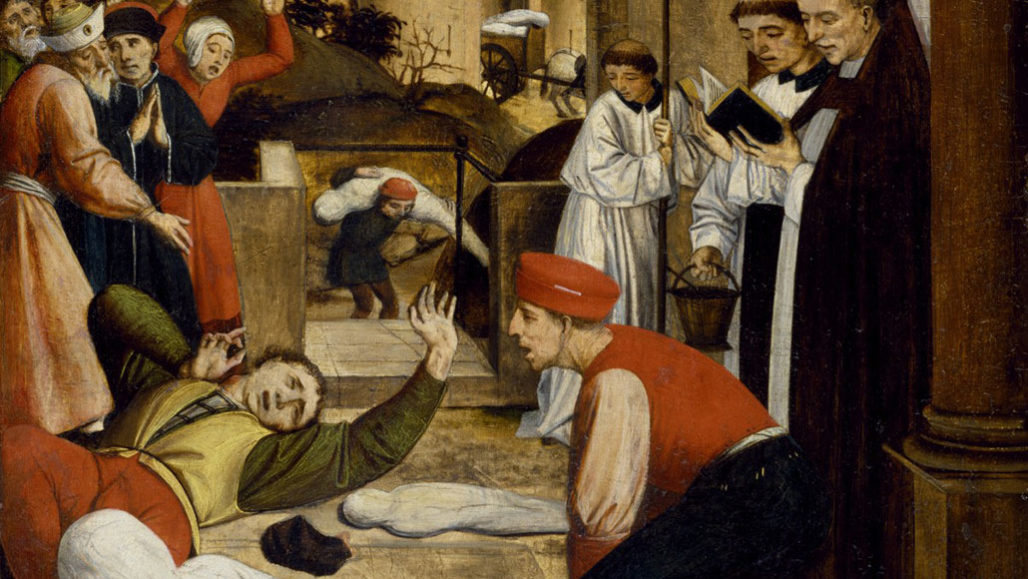A sixth century Eurasian plague, depicted in this painting as suddenly striking the Italian man on the left, was nowhere near as deadly and politically destabilizing as many scholars have assumed, an analysis indicates.
JOSSE LIEFERINXE/WALTERS ART MUSEUM (CC0)
Archaeological evidence suggests a sixth century epidemic didn’t radically change European history
An ancient bubonic plague outbreak often characterized as a mass killer that felled Eurasian civilizations was actually pretty tame, researchers say.
Known as the Justinianic plague, the outbreak likely didn’t cause enough deaths to trigger major events such as the eastern Roman Empire’s decline, Islam’s rise and the emergence of modern Europe, say environmental historian Lee Mordechai and his colleagues.
Many scholars have argued that the Justinianic plague caused tens of millions of deaths starting in the sixth century and reduced European and Middle Eastern populations by 25 to 60 percent. Economies crumbled as a result, devastating what was left of the Roman Empire and ushering in a period of cultural stagnation, from this perspective.
But several new lines of archaeological evidence related to ancient population and economic changes challenge that scenario, Mordechai and his team report December 2 in the Proceedings of the National Academy of Sciences.
Read the rest of this article...

No comments:
Post a Comment